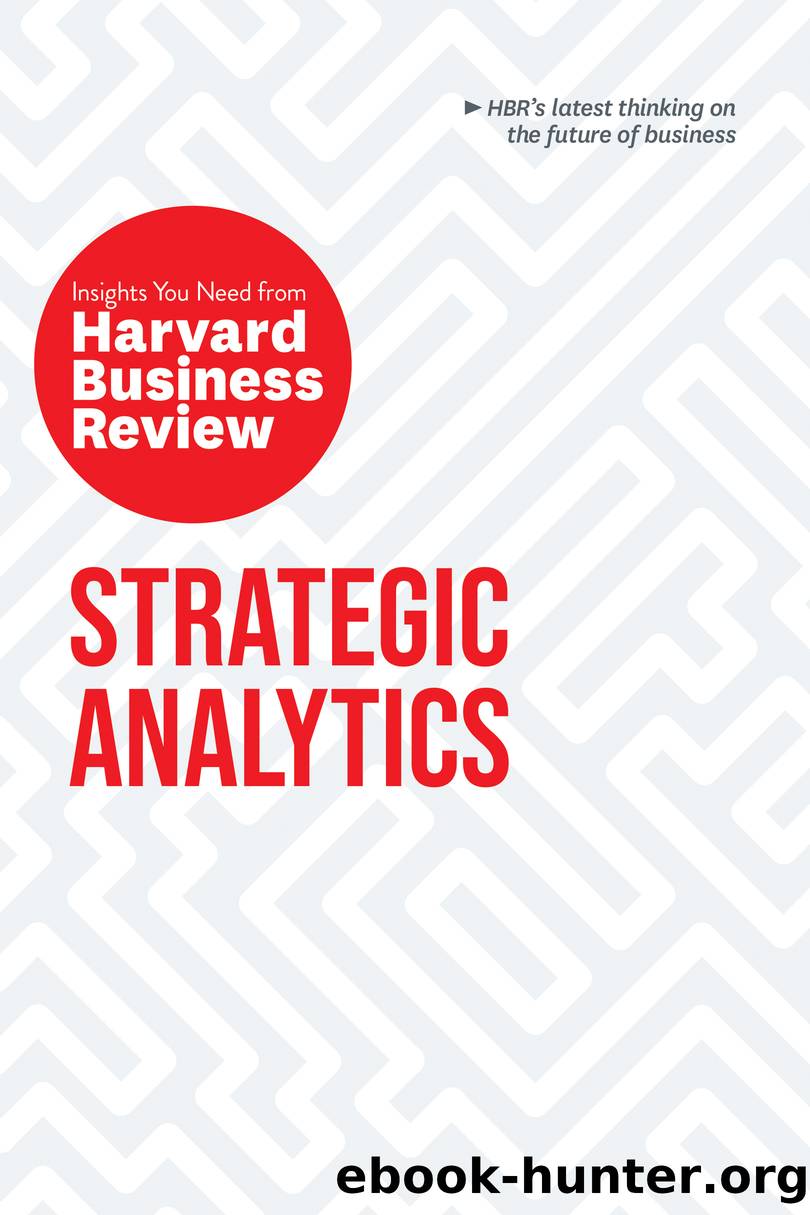Strategic Analytics by Harvard Business Review

Author:Harvard Business Review
Language: eng
Format: epub
Publisher: Harvard Business Review Press
Published: 2020-04-21T00:00:00+00:00
9
DATA SCIENCE AND THE ART OF PERSUASION
by Scott Berinato
Data science is growing up fast. Over the past five years companies have invested billions to get the most-talented data scientists to set up shop, amass zettabytes of material, and run it through their deduction machines to find signals in the unfathomable volume of noise. It’s working—to a point. Data has begun to change our relationship to fields as varied as language translation, retail, health care, and basketball.
But despite the success stories, many companies aren’t getting the value they could from data science. Even well-run operations that generate strong analysis fail to capitalize on their insights. Efforts fall short in the last mile, when it comes time to explain the stuff to decision makers.
In a question on Kaggle’s 2017 survey of data scientists, to which more than 7,000 people responded, four of the top seven “barriers faced at work” were related to last-mile issues, not technical ones: “lack of management/financial support,” “lack of clear questions to answer,” “results not used by decision makers,” and “explaining data science to others.” Those results are consistent with what the data scientist Hugo Bowne-Anderson found interviewing 35 data scientists for his podcast; as he wrote in a 2018 HBR.org article, “The vast majority of my guests tell [me] that the key skills for data scientists are … the abilities to learn on the fly and to communicate well in order to answer business questions, explaining complex results to nontechnical stakeholders.”
In my work lecturing and consulting with large organizations on data visualization (dataviz) and persuasive presentations, I hear both data scientists and executives vent their frustration. Data teams know they’re sitting on valuable insights but can’t sell them. They say decision makers misunderstand or oversimplify their analysis and expect them to do magic, to provide the right answers to all their questions. Executives, meanwhile, complain about how much money they invest in data science operations that don’t provide the guidance they hoped for. They don’t see tangible results because the results aren’t communicated in their language.
Gaps between business and technology types aren’t new, but this divide runs deeper. Consider that 105 years ago, before coding and computers, Willard Brinton began his landmark book Graphic Methods for Presenting Facts by describing the last-mile problem: “Time after time it happens that some ignorant or presumptuous member of a committee or a board of directors will upset the carefully thought-out plan of a man who knows the facts, simply because the man with the facts cannot present his facts readily enough to overcome the opposition … As the cathedral is to its foundation so is an effective presentation of facts to the data.”
How could this song remain the same for more than a century? Like anything else this deeply rooted, the last-mile problem’s origins are multiple. For one, the tools used to do the science include visualization functionality. This encourages the notion that it’s the responsibility of the data person to be the communicator. The default output of these tools
Download
This site does not store any files on its server. We only index and link to content provided by other sites. Please contact the content providers to delete copyright contents if any and email us, we'll remove relevant links or contents immediately.
Hit Refresh by Satya Nadella(8331)
The Compound Effect by Darren Hardy(7546)
Change Your Questions, Change Your Life by Marilee Adams(6637)
Nudge - Improving Decisions about Health, Wealth, and Happiness by Thaler Sunstein(6629)
The Black Swan by Nassim Nicholas Taleb(6184)
Daring Greatly by Brene Brown(5636)
Deep Work by Cal Newport(5452)
Principles: Life and Work by Ray Dalio(5315)
Rich Dad Poor Dad by Robert T. Kiyosaki(5140)
The Myth of the Strong Leader by Archie Brown(4786)
Man-made Catastrophes and Risk Information Concealment by Dmitry Chernov & Didier Sornette(4731)
Big Magic: Creative Living Beyond Fear by Elizabeth Gilbert(4719)
The Slight Edge by Jeff Olson(4716)
Discipline Equals Freedom by Jocko Willink(4631)
The Motivation Myth by Jeff Haden(4521)
Digital Minimalism by Cal Newport;(4512)
Stone's Rules by Roger Stone(4413)
Management Strategies for the Cloud Revolution: How Cloud Computing Is Transforming Business and Why You Can't Afford to Be Left Behind by Charles Babcock(4127)
The Doodle Revolution by Sunni Brown(4036)
